Do you know these facts about reindeer? The reindeer is an animal with a long tradition in our country, and at Christmas time, you can perhaps also hope to see Santa's reindeer. But do you know how reindeer find food in winter and what makes them different from all other deer?
Innehållsförteckning
Encounters with reindeer
When you live in Scandinavia, it's not unlikely that you've encountered reindeer at some point, even if we don't encounter them here in Stockholm right away. However, we saw many reindeer on our motorhome trip in northern Sweden in 2010 (oh how long ago!) - they crossed the road in front of the motorhome and walked around at least one of the campsites. We also saw reindeer when we more recently visited beautiful Bodö in Norway. Cosy to meet these beautiful animals! What are your experiences with reindeer?
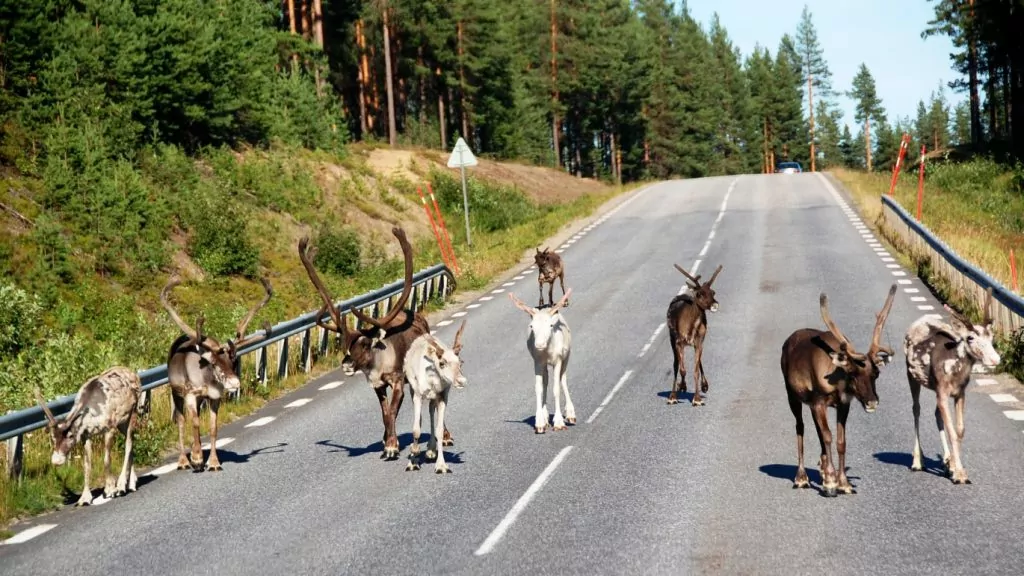
Facts about reindeer
Here we have gathered a number of interesting facts about reindeer. We are of course not experts on reindeer, but we have spent a lot of time searching for information. Sometimes different sources give slightly different facts about reindeer, and we have done our best to find information that seems consistent and reliable. Enjoy!
1. Reindeer are found on three continents
Reindeer are found in the northernmost parts of the North, in northern Russia and in North America, meaning they are found on three continents. The North American wild caribou is known to make long seasonal migrations in large herds.
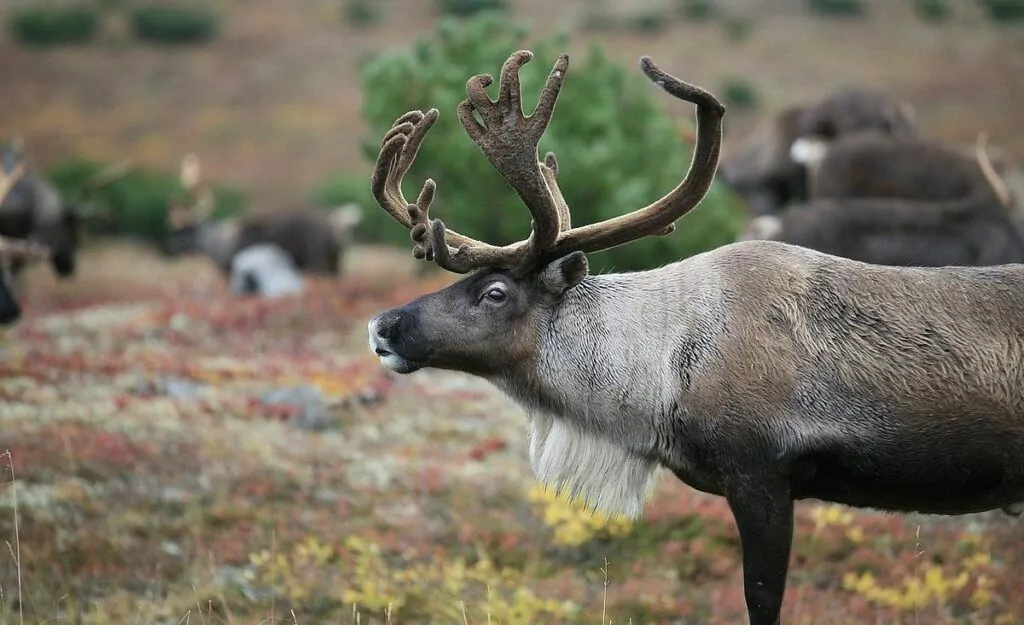
2. there are different subspecies of reindeer - some of which are on different islands
There are several different subspecies of reindeer, and most are distinguished by size or by the colour of their fur. For example, reindeer are found on various islands and remote locations, such as Greenland, Svalbard and Ellesmere Island in Arctic Canada.
3. Svalbard reindeer have short legs
In Svalbard there is also a subspecies of reindeer that differs from others in that it has shorter legs. The Svalbard reindeer is a separate subspecies, most closely related to the reindeer of Greenland.
4. Wild reindeer used to live in Sweden
It is believed that there were wild reindeer in Sweden, both forest and mountain reindeer, until the end of the 19th century. Reindeer were found in large herds throughout northern Sweden, and were hunted. In 1879 measures were taken to protect wild reindeer, but by this time there were probably not many wild reindeer left and today the species is considered nationally extinct.
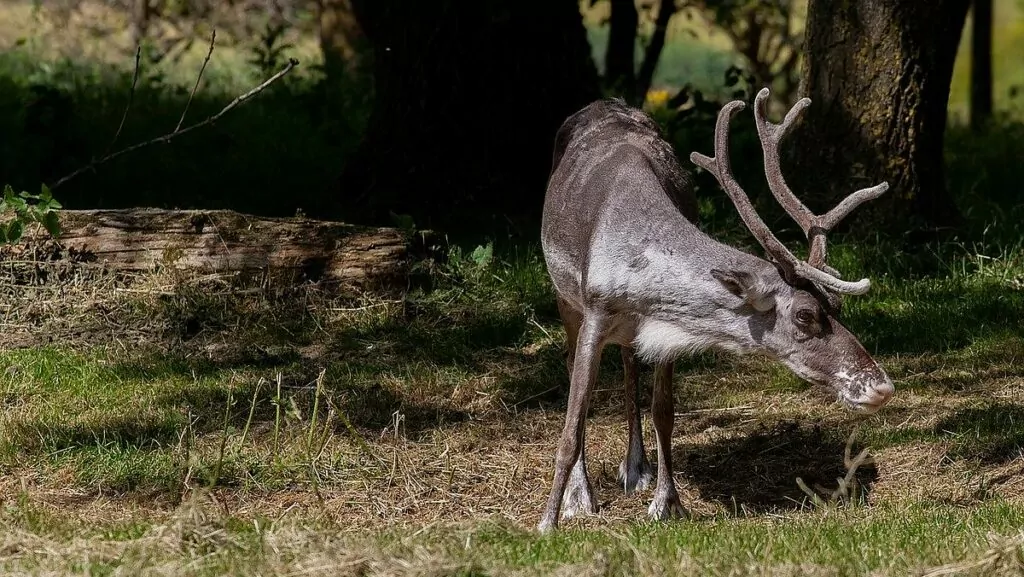
5. Reindeer have existed on Gotland
In the 18th century, reindeer were transported to Gotland and Gotska Sand Island. It is not known whether the reindeer were wild or domesticated, and the last of these reindeer were shot in the early 1800s.
6. Wild reindeer are found in several places
Although wild reindeer are no longer found in Sweden, they are found in several other places in the world. Wild reindeer are found in Russia, in northern parts of North America and on some Arctic islands. There are also wild reindeer in Norway.
7. Reintroduction of wild reindeer in Sweden has been discussed
The reintroduction of wild reindeer has been discussed on several occasions. The arguments have centred on biodiversity and the fact that wild reindeer could serve as both hunting prey and a tourist attraction.
8. both bulls and cows have horns
The reindeer, which is the only species in the genus 'Rangifer', is the only deer in which both sexes have horns. The bull's crown reaches 50 to 130 centimetres and weighs up to 15 kilograms, while the cow's crown only reaches 20 to 50 centimetres.
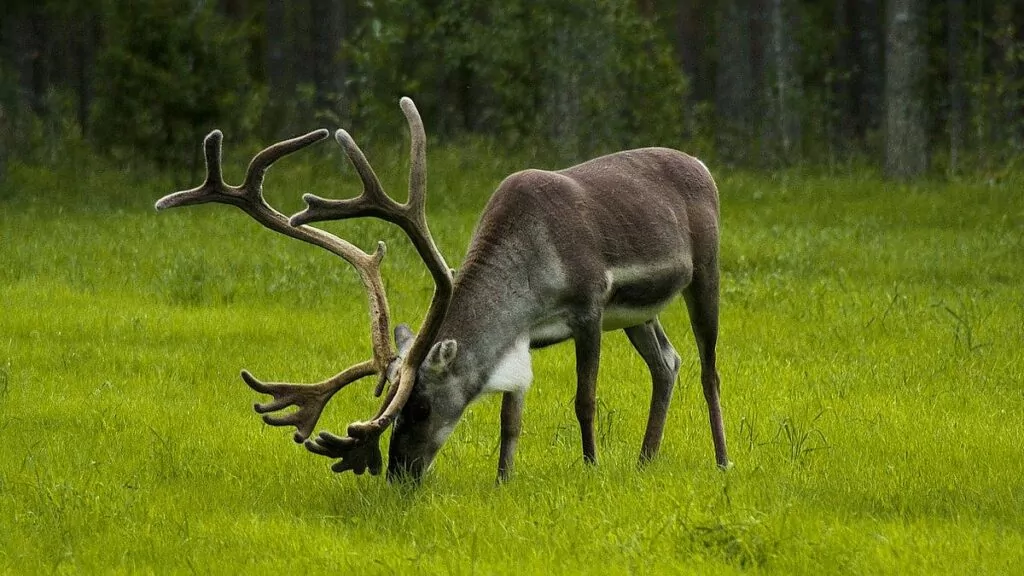
9. Bulls shed their horns before the cows.
Bulls shed their horns after the autumn rut. The older animals can shed their horns as early as December and the younger ones in February. Cows keep their horns all winter and shed them only after calving.
10. Dear reindeer has many names
Among reindeer, the male is called a bull or sarv. If the male is castrated, it may be called a herd. The female is called a cow, vaja or simla. Several of these words (sarv, vaja and härk) are loan words from the Sami language.
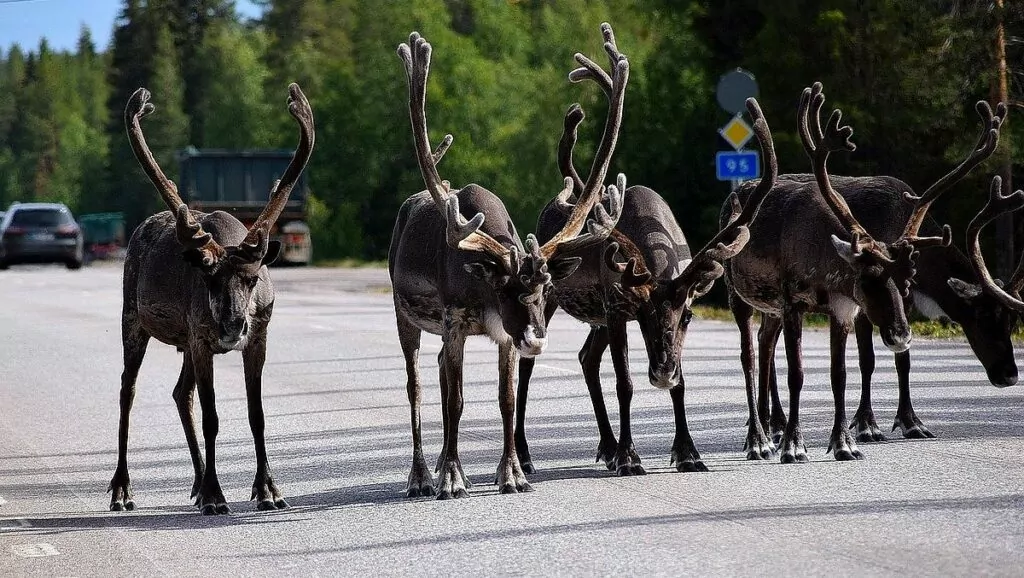
11. The colour of reindeer can vary
Reindeer often have a dark grey-brown colour, but the shade can vary, especially in domesticated reindeer. Reindeer are also lighter in winter than in summer, as the colour helps to protect them from predators. There is also a certain subspecies of reindeer that is almost white in colour all year round.
12. Reindeer fur is a good insulator
The reindeer's fur consists of hairs that are partly made up of hollow air cells, which provide excellent protection against the cold. In addition, reindeer have a dense and warm undercoat.
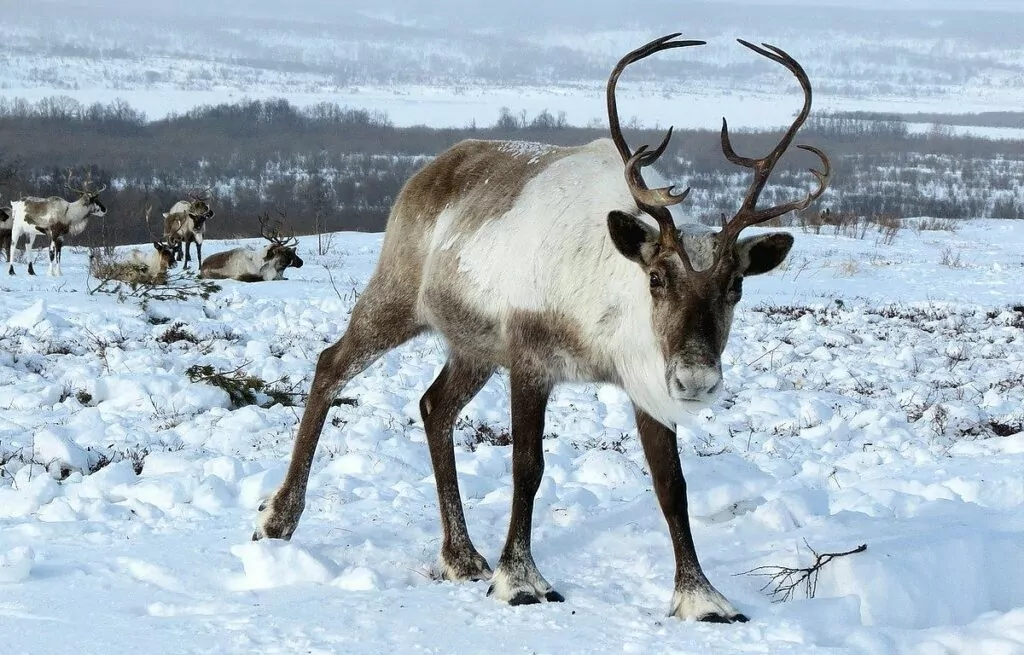
13. A snapping sound is heard when the reindeer are walking.
When the reindeer walks, a snapping sound is heard. This is caused by a tendon attachment in the hind leg that slides over a bone, producing a sound. It is not clear what the significance of the sound is, but it may make it easier for reindeer to stay together in darkness and fog.
14. Reindeer use their hooves to find food in the snow.
Reindeer have hard, two-part hooves that are good for travelling over hard and stony ground. The hooves are also good for digging food out of the snow in winter.
15. Reindeer have a well-developed sense of smell.
The reindeer's sense of smell is very well developed and helps the animal find food, such as lichens, under the thick snow.
16. Reindeer like mushrooms
The reindeer is a ruminant herbivore and eats many types of plants, such as grasses, lichens, rootstocks, deciduous rice and various herbs. They are also fond of mushrooms, such as mushrooms, rice husks and creams.
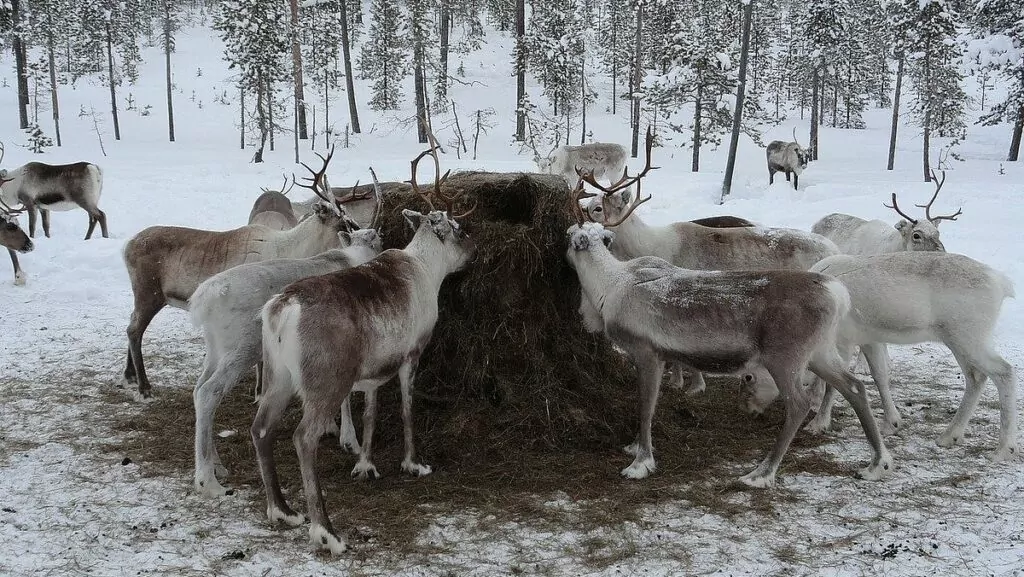
17. A newborn reindeer calf can walk soon after birth.
Reindeer mating season occurs between September and October, and calves are born between April and June. The newborn calves, which weigh between 4 and 6 kilos at birth, are able to stand and walk just a few hours after birth.
18. Reindeer get older than bulls
Reindeer (vajors) can live up to 20 years, and sometimes even longer. Dukes (castrated reindeer) can also live to be old, while bulls (sows) have a much shorter lifespan.
19. Reindeer are fast
Reindeer often travel long distances and can run fast when needed. Reindeer can run at 80 km/h.
20. Reindeer are exposed to many different hazards
Reindeer can be killed by landslides and avalanches, and if the ice crust on the ground hardens in winter, they risk starving to death because they can't access food under the snow. There are also predators that can kill reindeer, such as wolves, wolverines, lynx and bears. Humans can also pose a threat.
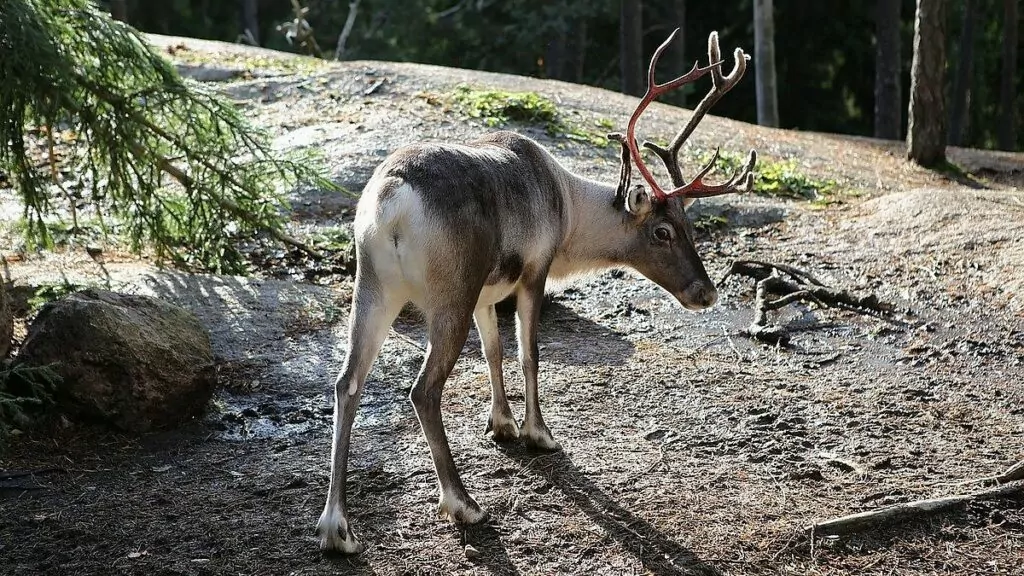
21. Humans hunted reindeer already in prehistoric times
In prehistoric times, reindeer were much further south than they are today, and spearheads made from reindeer horn have been found in Saint-Antonin-Noble-Val in France, which are between 12,000 and 15,000 years old. Reindeer are also depicted in a total of 20 out of 133 painted caves in France and in three out of 72 caves in Spain.
22. Reindeer husbandry has a long history
There are historical sources indicating that the Sami were domesticating reindeer as early as the 9th century, although the extent is not known. Reindeer husbandry also has a long history in Siberia. In Alaska, Canada and Greenland, reindeer husbandry only arrived in the 19th century.
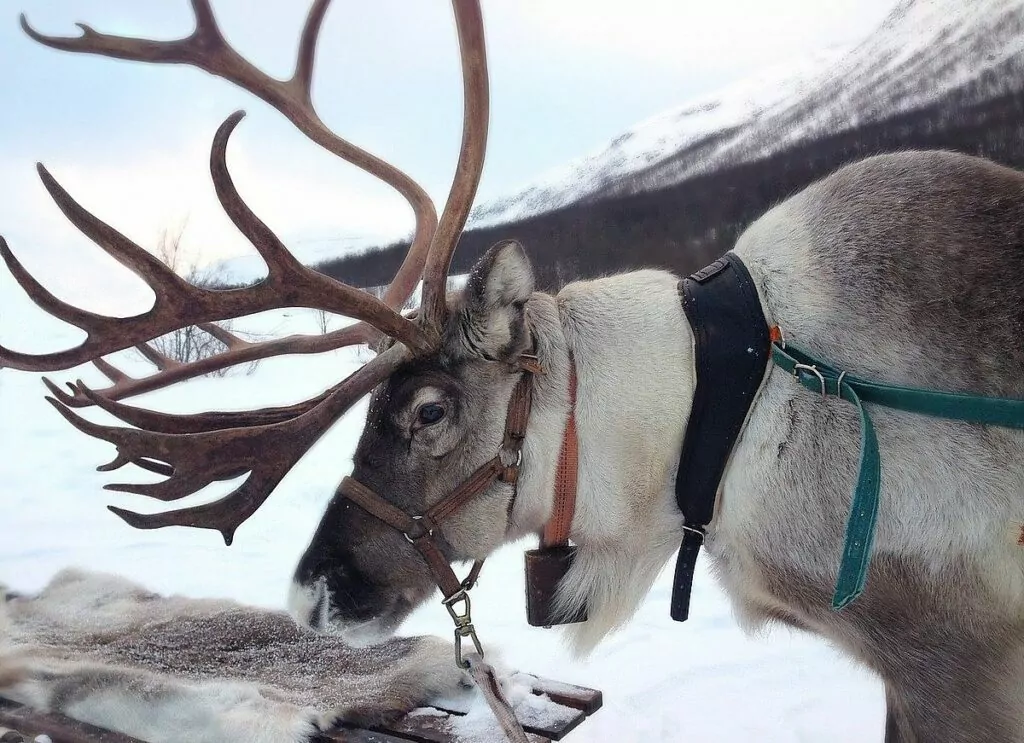
23. All parts of the reindeer could be used
Domesticated reindeer have traditionally been used as meat animals, but also for milk production and cheese making. The skin could be used for leather and the bones could be used to make tools. Stomachs have also been used as vessels for food and some tendons were used for sewing fur and leather.
24. In some places, reindeer have been used for riding.
In many different reindeer-herding cultures, reindeer have been used as draught and pack animals. In some cultures, reindeer have also been used for riding, including by the Siberian indigenous Evenk people.
25. In Sweden, reindeer herding takes place from Idre to the north.
Reindeer husbandry in Sweden today takes place from Idre in the south to Karesuando in the north. Swedish legislation (the Reindeer Husbandry Act) limits reindeer husbandry to those who are members of one of Sweden's Sami villages. Reindeer migration is controlled by the Sami using helicopters, snowmobiles and off-road vehicles.
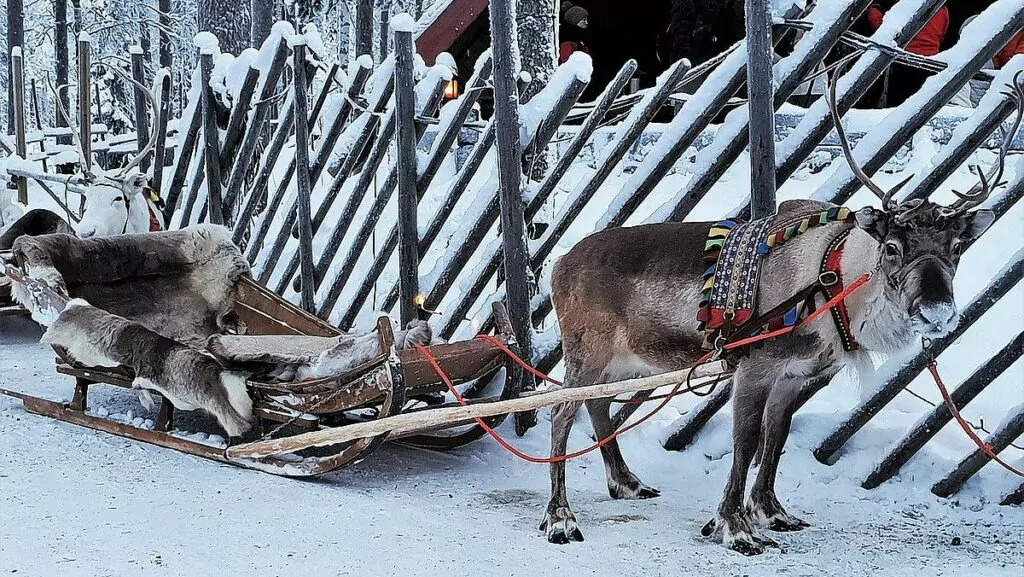
More fun facts about reindeer
- Santa's reindeer are the reindeer that pull Santa's sleigh. In American culture they tend to fly and the names of the eight reindeer are Dasher, Dancer, Prancer, Vixen, Comet, Cupid, Donner and Blitzen.
- Rudolph the Red-Nosed Reindeer is a popular Christmas story about Rudolph the reindeer who is teased for his red muzzle, but then gets the honour of being harnessed to Santa's sleigh.
- Clean on the plate is not entirely uncommon. For example, how about reindeer caviar, reindeer steak or souvas (salted and lightly smoked reindeer meat)?
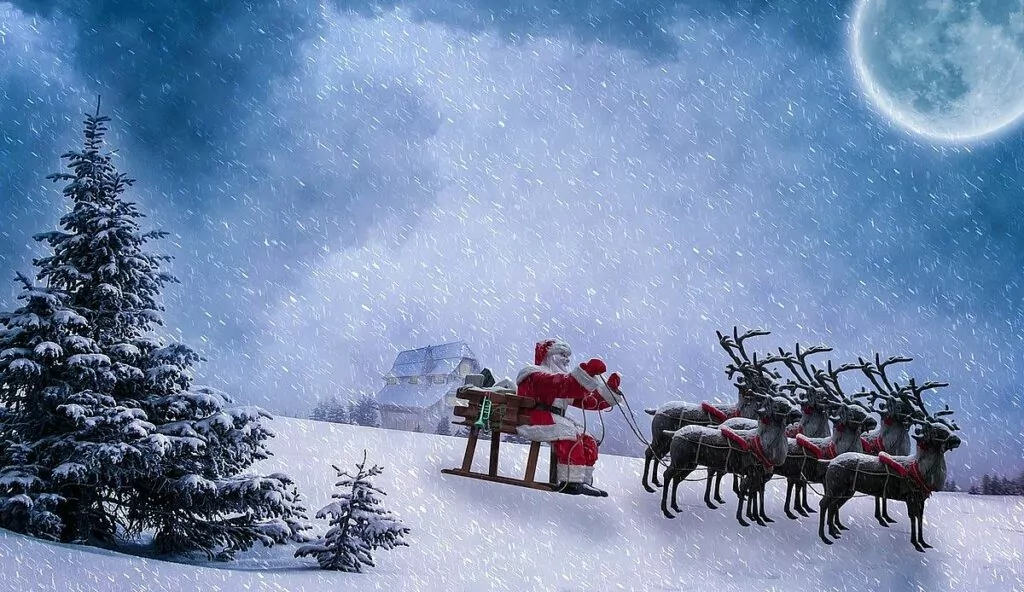
More facts about reindeer?
Do you know any more interesting facts about reindeer? Or perhaps you can share some exciting reindeer stories?
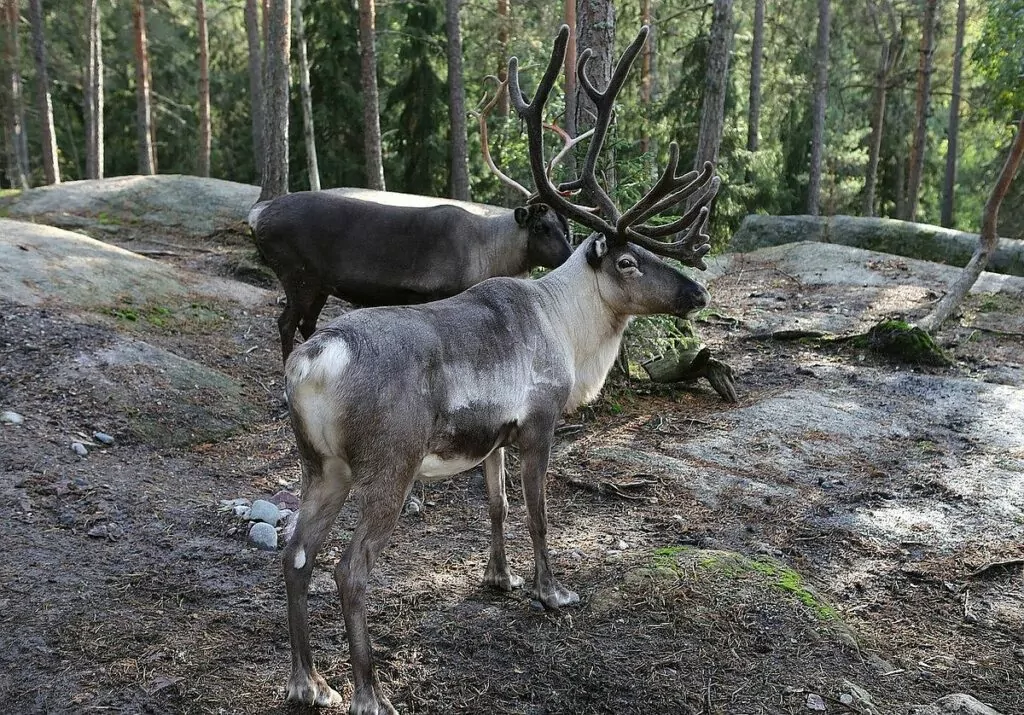
All images in the reindeer facts post are borrowed from Pixabay, except for the header image and the image under the heading "Encounters with reindeer" which are our own.

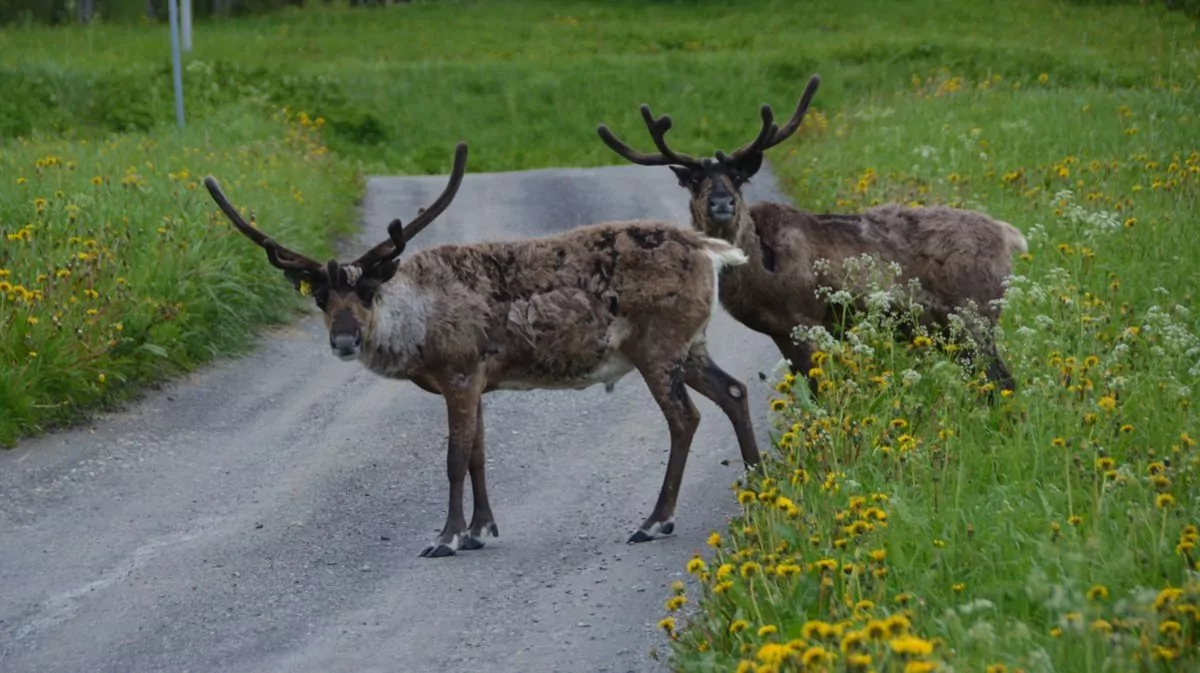









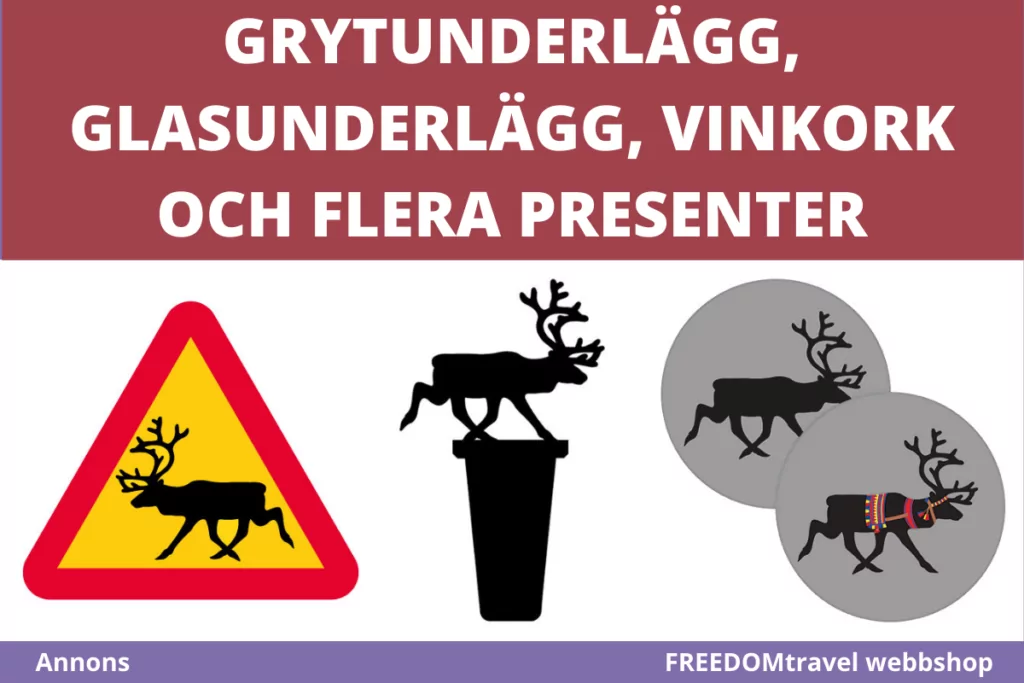
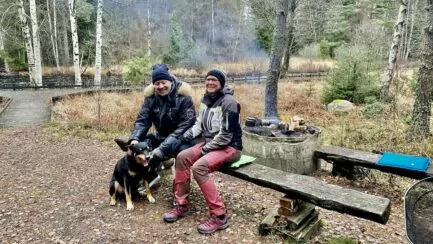
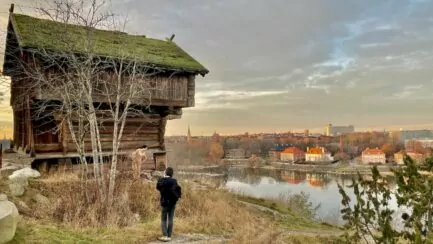

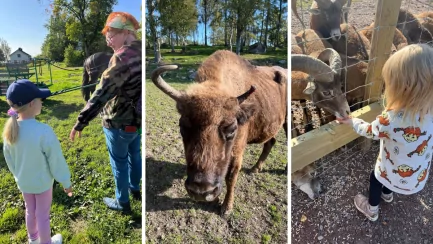



Mariann says:
Reindeer husbandry is carried out in Norrbotten by Sami villages, forest samebys and concession samebys, just over 30 in total.
19 December 2020 - 8:33
Helena says:
Thanks for the info! Do you mean that the figure I wrote is not correct? I can delete the figure just in case, so it won't be wrong in any way.
19 December 2020 - 13:17
Mariann says:
It was not a criticism, but just a demonstration of the different reindeer herding groups that exist 🙂.
19 December 2020 - 16:42
Helena says:
Ok, thank you very much Mariann, interesting addition!!! 🙂 (And I also appreciate when someone sometimes tells me if some detail is wrong, because it happens of course ;)).
19 December 2020 - 16:50
4000mil says:
But what a thing! I have the "same" post scheduled for tomorrow. Do not think I will be able to come up with something new, so it will probably simply go out. 😅🤥
19 December 2020 - 9:47
Helena says:
Is it true? Crazy! 😂 It will be interesting to read tomorrow!
19 December 2020 - 13:18
Ama de casa says:
Since Santa's reindeer have horns at Christmas, they must all be cows, right? The bulls shed theirs already in November... 😉.
Have a great rest of the weekend!
19 December 2020 - 9:51
Berit says:
I firmly believe that Santa's reindeer are vultures! Who else would be able to find Santa's reindeer everywhere in such a short time :))?
19 December 2020 - 13:18
Helena says:
Haha, you always come up with such clever things! 😀👍
19 December 2020 - 13:18
Berrak says:
Reindeer that are used as draught animals are usually hares, I have tried to find when the hare sheds its horns but have not succeeded, it is not obvious that it does so when the hare does. Does anyone know?
29 December 2023 - 22:45
Lena+i+Wales+och+Spanien says:
What a fun fact about reindeer!
Certainly not so much about them.
I have been to Svalbard and seen these smaller reindeer on the mountains there.
Merry Christmas!
19 December 2020 - 13:22
Helena says:
Great that you have been to Svalbard! It has long been a dream of mine to go there!
22 December 2020 - 21:27
Frido says:
Read an article in HBL (Hufvudstadsbladet) about how Finnish restaurants in Lapland have removed reindeer from the menu during the periods when British tourists come to visit Santa Claus in Rovaniemi. They couldn't imagine eating Santa's reindeer! How weird! Fresh, fine, locally produced meat, and they don't even want to read reindeer on the menu. I think it's a bit, what to say, narrow-minded.
After all, it is an animal that looks like a deer and not a "monkey".
In any case, the reindeer will be back as soon as Finnish diners start to dominate again.
19 December 2020 - 17:04
Helena says:
But is it true? Really interesting! It's good and locally produced meat! Perhaps we modern people have a strange attitude towards what we eat ...? Thank you for telling us!
22 December 2020 - 21:29
BP says:
WOW! What solid research you have done! Since I have basically only eaten reindeer in various forms, I knew almost nothing at all about the different reindeer. Very funny and interesting reading:-)
19 December 2020 - 17:14
Helena says:
Yes, we did some reading. Interesting! 🙂
22 December 2020 - 21:29
Lena - gott för själen says:
Wow, what an interesting read. We see reindeer every midsummer weekend when we hang out in Idrefjäll. They are very tame and don't seem to care much about people.
Unfortunately, they don't seem to care much about cars either because they don't like to move when you drive by. I got a tip that you can roll down the window and wave a piece of clothing or fabric and they get a little scared and run away. Better that than being run over, I think.
Hug Lena
26 December 2020 - 9:31
Jenny Sellén Lindkvist says:
Hello, what is the reindeer's call?
Regards
/Jenny
15 March 2022 - 21:36
Claes Nilsson says:
Large herds of reindeer are often seen running at full gallop across snow-covered ground.
Seemingly for no reason.
Is there any explanation for this behaviour?
07 August 2022 - 21:18
Lu says:
There are actually blue reindeer scientists have actually found a blue reindeer in a forest in Russia.
23 January 2023 - 14:22